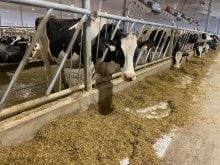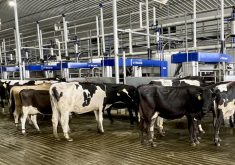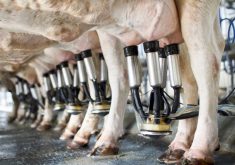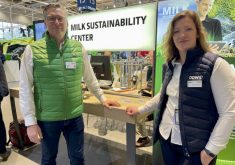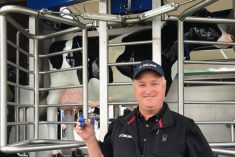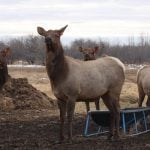If growth continues in Canadian dairy farmers’ use of robotic milkers, robots will milk half of the national dairy herd by 2040, said Carolin Turner.
Turner, with Holstein Canada’s classification field services, told Grey-Bruce Farmers’ Week dairy day participants that 130 Canadian dairy herds transitioned to or built a new robotic barn in 2021.
Why it matters: The knowledge base in robotic milking systems continues to grow, making it easier to find needed information when making decisions about their use.
Read Also
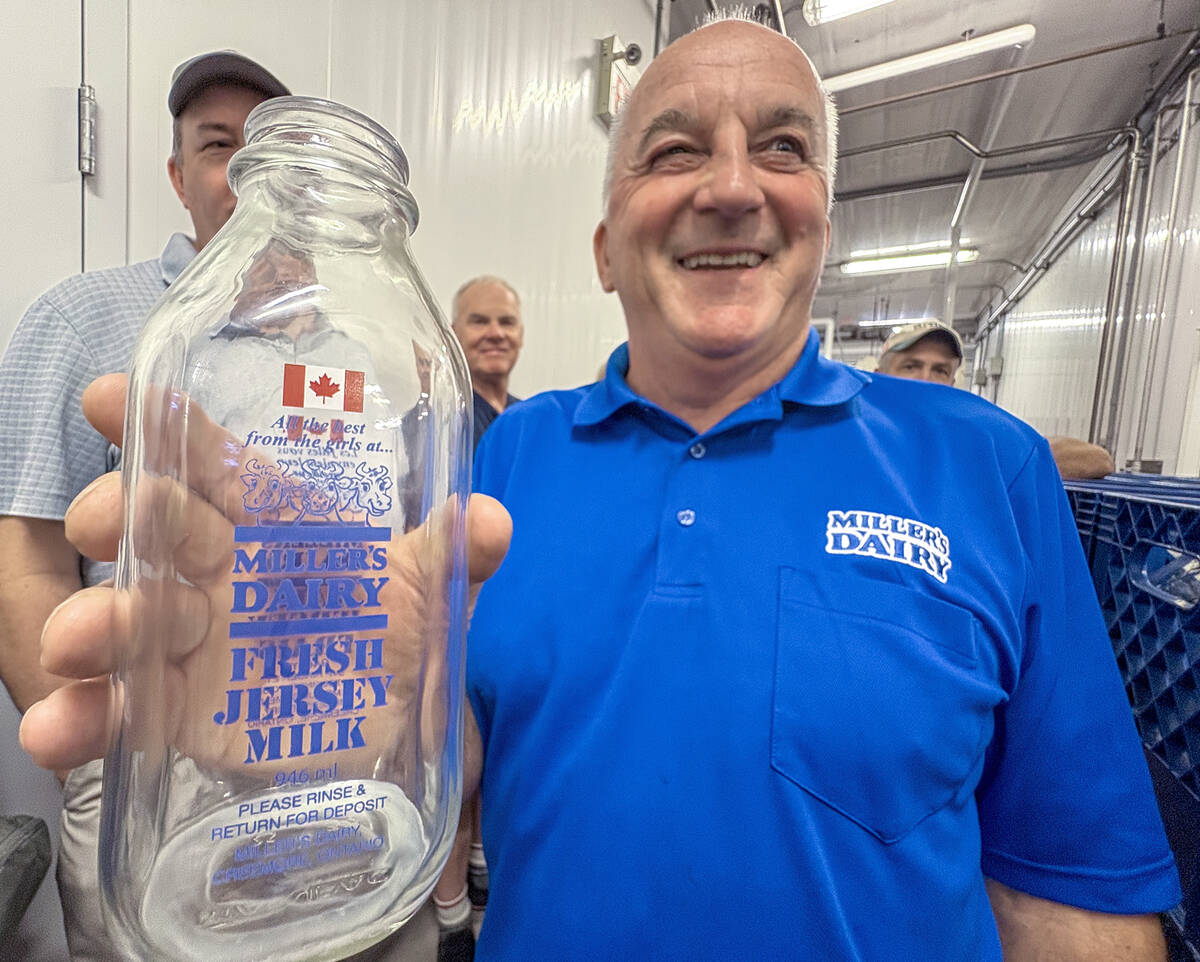
Farm to bottle, Miller’s Dairy a winning blend of tradition and vision
Miller’s Dairy in Creemore blends vintage equipment with modern tech to produce glass-bottled premium Jersey milk and ice cream.
Manitoba and British Columbia lead with 39.3 and 24.4 per cent, respectively, of barns using robotic milkers. Ontario and Quebec hold much of the national dairy herd and are at 14.8 and 12.9 per cent of herds milked by robots.
One in every four dairy farms in Bruce County and one in every five in Grey County use robotics, said Turner.
A panel of three dairy farmers at Grey-Bruce Farmers Week noted diverse experiences with robotic milking.
Korb Whale, of Clovermead Farms and Mapleton Organic, was an outlier for the panel as an early adopter who later removed his robotic milking system. In 2007, he installed a robotic milker to save time and inputs and increase milking frequency and production. Those are the advantages most dairy farmers find with robotic milking.
“Over the 12, almost 13 years we had robots, we achieved none of those,” said Whale.
He estimated robots increased costs by 4.5 cents per litre for maintenance and 2.5 cents per litre on purchased feed. Labour costs were unchanged compared to the double six parlour he had before.
In 2020, Whale installed a DeLaval Rotary Parlour at Clovermead and realized a 30 per cent spike in production.
“We probably had some early versions of the technology, and there were lots of growing pains,” he said. “I’m fully willing to take the blame. I don’t think it’s the technology. I think it was probably me, in the end, who was the problem.”
Whale doesn’t regret trying robots, noting they work well for some but he was relieved to return to a parlour.
“In the end, it was a really good decision for us to get out of robots,” said Whale. “Ironically, the new farm we bought has robots, so back into robots. We’ll talk about that in a few years.”
Jon Wiley, of Fairmount Farms, retrofitted his barn with a Lely A4 in 2013 and saw a marked increase in positive cow-people engagement and better calf gains and robot training with the installation of a Lely Calm feeder for his calves as well.
“The Lely Calm made a huge difference on our calves,” he said. “They’re growing way faster and learning the robot way. We were calving 22 to 24 months.”
Ron Groen, of Eastlink Dairy and Dalvis Farms, invested in a robot retrofit in 2016 to upgrade infrastructure and technology in his 1997 parlour barn.
He found guided-flow robot milkers provided the same technology, management and milking capacity for half the price as a double 16 parallel parlour option in both barns.
“It was financially cheaper for us,” Groen said.
The post-milking sort system allowed for breeding, preg checks and vaccinations.
Groen said he feeds 280 grams of pellets per cow per day, with 37 litres of milk produced on 2.8 visits. It lowered his feed costs.
“I have a six-tonne bin, and I get the truck in twice a year,” he said. “That’s why we went guided. I told the feed company that I’m probably their worst customer.”
Focus on data
Whale used Lactanet for benchmarking but he relies on the data from the milk recording system in his parlour.
“You don’t get accurate data from robots, but you get daily data, so it’s enough to make decisions,” said Whale. “Lactanet is trying to change and create more benchmarking possibilities.”
Groen stopped using Lactanet because he felt there wasn’t enough value for the price, and Wiley dropped Lactanet once he switched because his robot provides instant somatic cell counts.
Whale, a Lactanet board member, said the company is working on larger dairy data projects.
”Lactanet is working with eight other countries, and they’ve created this thing called Iden, (which) is the big network of data in the cloud.”
Whale said that could facilitate information flow to Lactanet, breeders or producers.
“(For example) on the genetic side, we don’t need everybody’s data. You can do a lot with a little, especially with genomic testing,” Whale said. “There’s more data and more specific data available than ever before.”
Data trends lean toward bulk samples and away from individual data. Seventeen farms globally, including five in Canada, were used to define the feed efficiency genetic trait information with 70 per cent accuracy.
“At some point, we’re going to be taking bulk tank samples and doing all of the analysis for every cow in your herd if it’s gnomically tested,” said Whale. “The technology is available right now in France; they can do fat, protein, somatic cell for every cow in the herd that’s genetically tested from a bulk tank sample.”
Turner said genomic testing is another way to identify animals and could complement traditional registration. She said genomic testing provides more profound insight into the animal, including verification of sire and birth date.
“We need the same kind of cow for all the environments, so build a cow that’s functional — healthy, functional solid cows that can stand longevity whether you’re a robot, parlour, tie stall or pack barn.”




